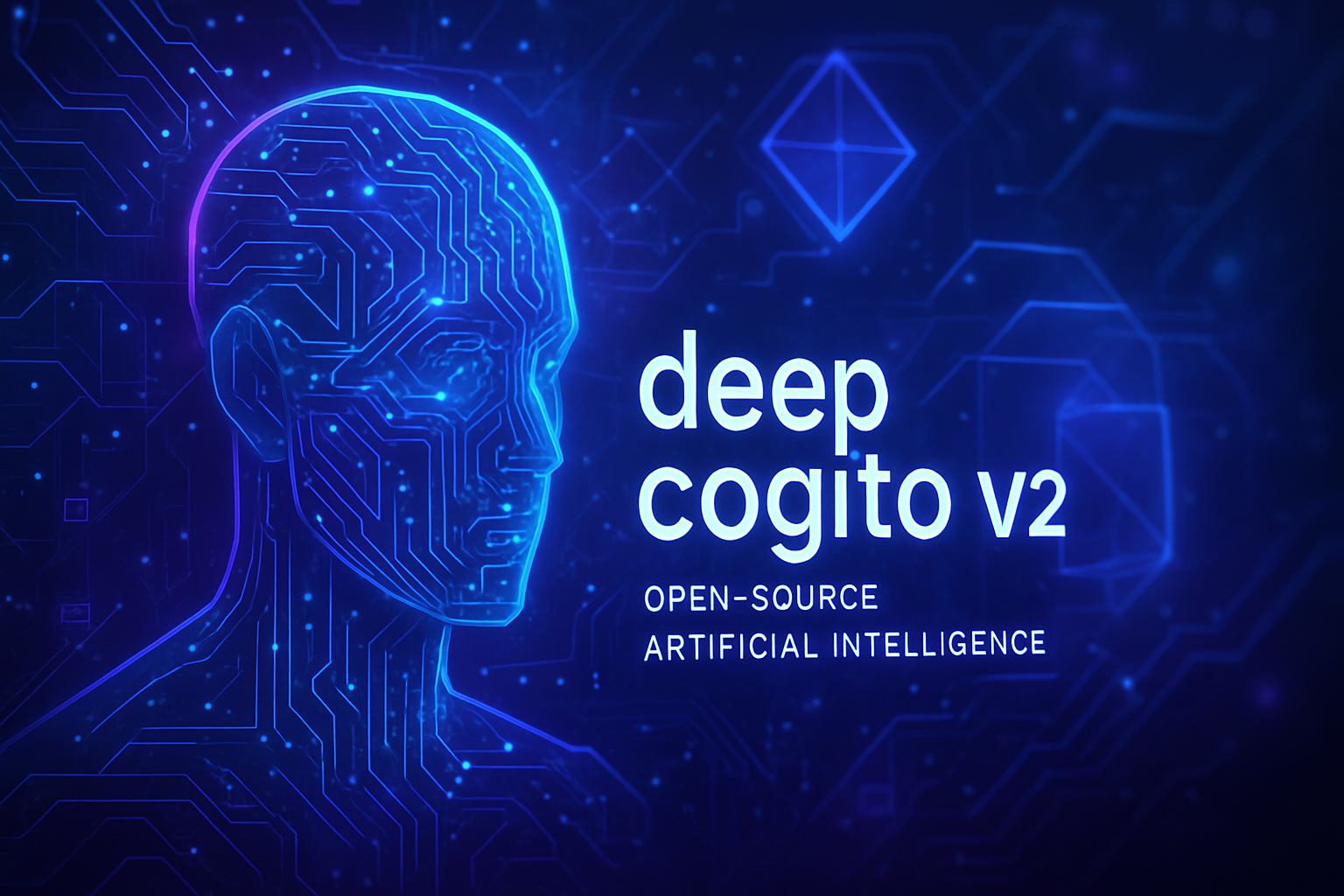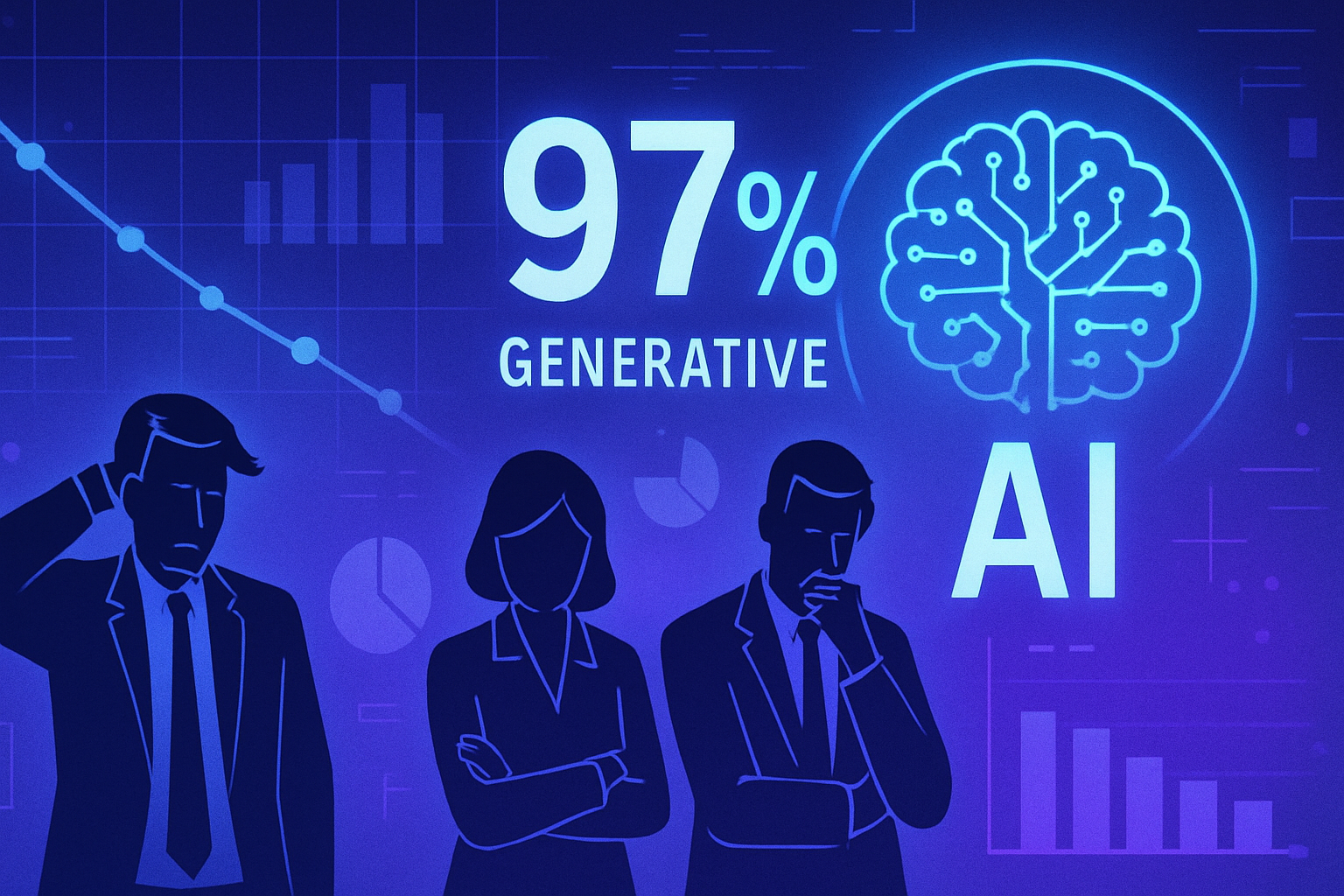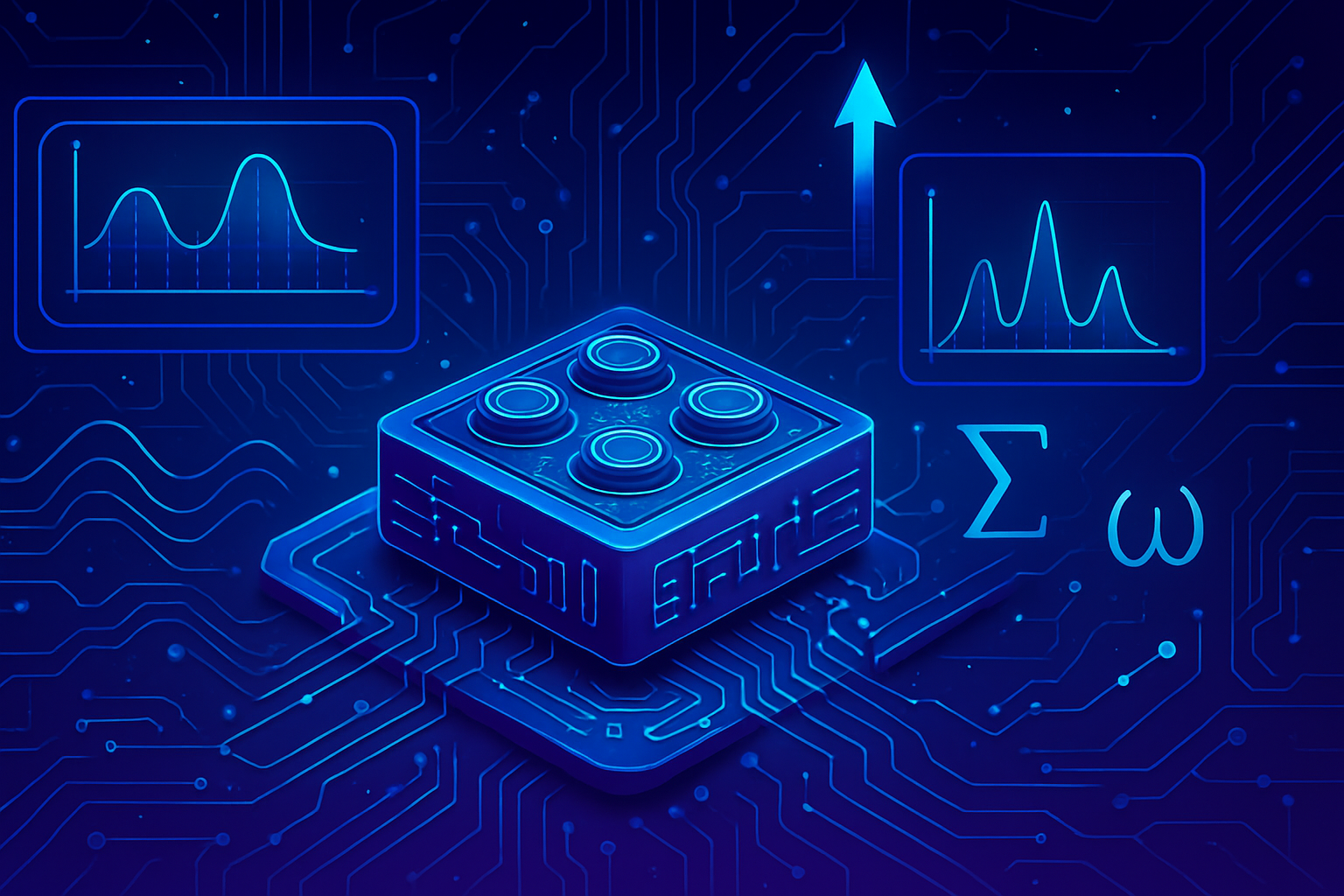Artificial intelligence is experiencing a revolution with the advent of Deep Cogito v2, which redefines the notions of reasoning and learning. This innovative open-source model illustrates a bold quest for unprecedented cognitive autonomy. Through an original approach that focuses its learning on its own reasoning processes, this AI frees itself from traditional limitations.
*The sophisticated architecture of Cogito v2* equips it with impressive capabilities, ranging from data manipulation to an enhanced understanding of images. *The model with 671 billion parameters* is hailed as one of the most powerful on the global stage. *Every advancement is a testament to a revolution* that could transform our interaction with technology and artificial intelligence.
Deep Cogito v2: A Major Advancement in Open-Source Artificial Intelligence
Deep Cogito has recently unveiled its new range of open-source artificial intelligence models, titled Cogito v2. This series stands out for its ability to sharpen its own reasoning skills, marking a significant milestone in the evolution of AI technologies. The models, made available under an open-source license, encompass four hybrid reasoning variants, classified into two categories of intermediate sizes and two large-scale models.
Features of the Cogito v2 Models
The Cogito v2 range includes models with 70 billion and 109 billion parameters, as well as heftier versions with 405 billion and 671 billion parameters. The largest model, the 671B Mixture-of-Experts (MoE), is already considered one of the most powerful open-source artificial intelligences in the world.
Deep Cogito officials report performance comparable to the latest innovations from DeepSeek. This model also proves capable of competing with proprietary systems such as O3 and Claude 4 Opus, thus demonstrating a significant convergence between open-source and commercial solutions.
A New Approach to Reasoning
What differentiates Cogito v2 from previous models is not simply the size or power, but a fundamental change in how artificial intelligence acquires knowledge. The design of the system allows for internalization of reasoning processes. Rather than merely extending the reflection time during inference to find an answer, this new architecture learns to transform its discoveries into building blocks of its internal parameters.
This internalization of reasoning uses a method called Iterated Distillation and Amplification (IDA). This technique distills conclusions drawn from research to reintegrate them into the core parameters of the model. The aim is to build a reinforced intuition, allowing the AI to anticipate the results of its own reasoning without needing to perform a complete search.
Performance and Efficiency
The Cogito v2 models display a reasoning chain that is, on average, 60% shorter than that of competitors such as Deepseek R1. This efficiency also translates on the budgetary level, with Deep Cogito claiming to have developed its models at a total cost of under 3.5 million dollars. While this amount may seem considerable to the general public, it remains minuscule compared to the budgets of many leading AI laboratories.
Optimizing the Thinking Process
The flagship model with 671 billion has received special attention, trained not only to perfect its final responses but also to refine its thinking processes. This strategy discourages deviations during reasoning and promotes a more direct approach to the solution. Performance data indicate that this methodology is bearing fruit, with Deep Cogito’s open-source model matching or exceeding the latest versions of DeepSeek on key benchmarks.
Emergent Capabilities of the Models
One of the most unexpected outcomes lies in the models’ ability to reason about images, a skill they have not explicitly learned. The team shared an example where the Deep Cogito model compares two images, that of a duck and a lion. This comparison illustrates a deep reflection process on their habitats, colors, and composition, solely through transfer learning. This emergent property could become a powerful means of generating learning data for future multimodal reasoning systems.
Future and Commitments of Deep Cogito
Members of the Deep Cogito team aim to “reach the peaks of iterative improvement gains” in their quest to realize superintelligence. They reaffirm their commitment to ensuring that all artificial intelligence models developed will be open-source. This decision is part of a broader trend within the industry towards sharing technological advancements.
To delve deeper into topics related to artificial intelligence and big data, major events such as the AI & Big Data Expo will take place in Amsterdam, California, and London.
Common Questions About Deep Cogito v2
What is Deep Cogito v2 and what makes it different from other AI models?
Deep Cogito v2 is a new range of open-source AI models focusing on perfecting its reasoning skills through a process called Iterated Distillation and Amplification (IDA). This allows it to integrate its own reasoning processes, granting it better intuition and superior efficiency.
What types of models are included in the Cogito v2 family?
The Cogito v2 range includes four hybrid reasoning models: two intermediate-sized models with 70B and 109B parameters, and two large-scale models with 405B and 671B parameters. The 671B model is particularly praised for its power.
How does the Iterated Distillation and Amplification (IDA) technique improve AI reasoning?
The IDA technique allows the model to integrate lessons learned from a research process into its core parameters, enabling it to anticipate the outcomes of its reasoning without having to perform tedious searches each time.
What is the impact of Cogito v2 on development costs compared to other AI labs?
Deep Cogito has developed all its models for a total cost of less than 3.5 million dollars, which is relatively low compared to the expenditures of major AI labs, thereby lowering the barriers to innovation in the field.
What makes the 671B model unique and what are its applications?
The 671B model has been specifically designed to improve not only the quality of its final responses but also the reasoning process itself, enabling it to provide more direct and efficient solutions in various application areas.
What types of reasoning are possible with Deep Cogito models, especially regarding images?
Surprisingly, Deep Cogito models are capable of reasoning about images, having not been explicitly trained for it. They can compare and analyze visual elements, such as habitats and colors, through a process of transfer learning.
What are the future ambitions of the Deep Cogito team regarding AI?
The Deep Cogito team plans to leverage gains from iterative self-improvement to continue advancing towards the development of superintelligence, while maintaining their commitment to making all AI models they create open-source.






